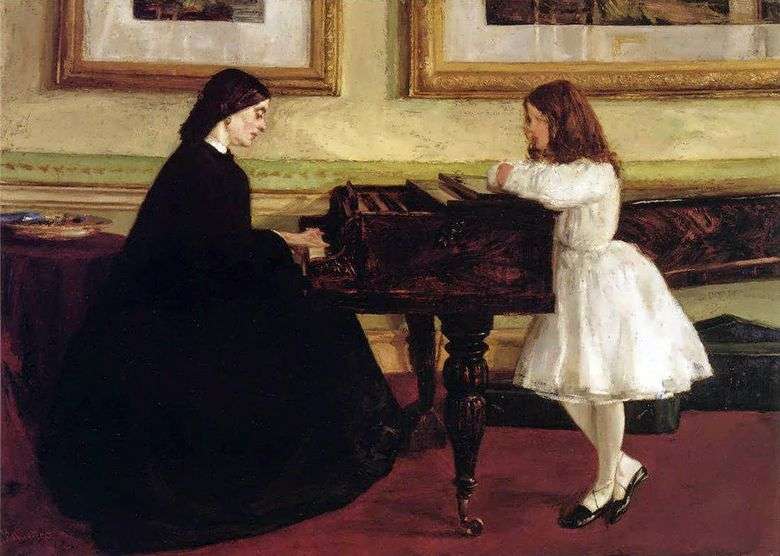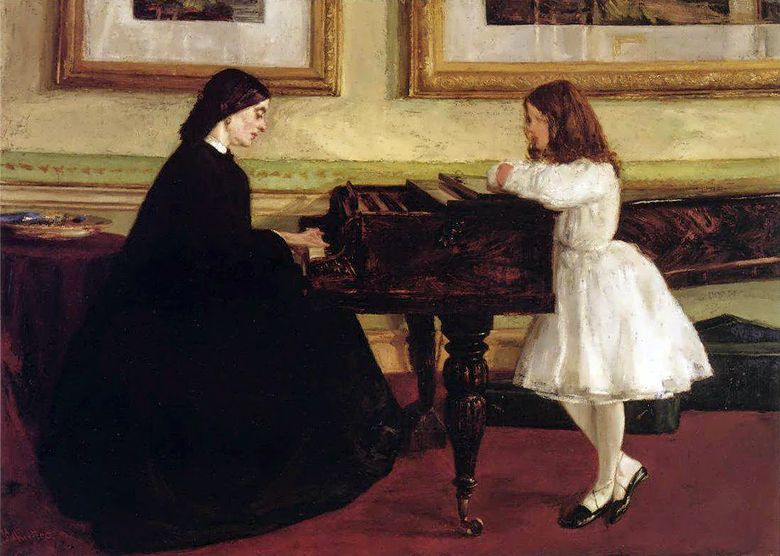
“At the piano” – the first big picture of Whistler, work on which was begun in London in November 1858, and finished next spring. In the painting we see the artist’s sister, Deborah and her daughter Anna. The idea of creating the canvas was inspired by Whistler’s childhood impressions of life in Russia. Little Deborah was a gifted pianist and often performed with concerts in St. Petersburg. The melancholic mood of the picture is explained, most likely, by these lyrical memories of a happy childhood. Whistler intended to present the painting at the Salon in 1859, but it was called “too original” and rejected, but the artist François Bonnev had a different opinion, so he exposes Whistler’s painting in his Paris workshop. Having seen this work,
“The piano” impresses with an exquisite selection of complementary color shades. Complex gray-green and gray-ocher colors contrast with local spots: Deborah’s black dress, the white color of her daughter’s outfit, and the red color of the sofa. The picture is written with wide sweeping strokes, reminiscent of the Courbet manner.
Whistler is inspired by the traditional fragmentary composition for East painting. Receiving the “truncation” hanging in the background of the paintings makes the construction of the canvas completely original, in contrast to the compositions of realists who, with the same purpose – to maximally expand the picture space – used only the perspective and the play of light. In the painting “At the Piano” one can also notice the influence of Dutch painting on Whistler’s work.
The collector, who was going to buy this painting, explained that she “would look wonderful next to Vermeer.” Degas had this picture in mind when he recalled the beginning of his creative path: “Fontaine, Whistler and I walked the same road – the Dutch.”
 En el piano – James Whistler
En el piano – James Whistler Au piano – James Whistler
Au piano – James Whistler Nocturne in blue and silver: Wharf in Battersea by James Whistler
Nocturne in blue and silver: Wharf in Battersea by James Whistler Symphony in White No. 3 by James Whistler
Symphony in White No. 3 by James Whistler Peacock. Tiffany Workshop by James McNeill Whistler
Peacock. Tiffany Workshop by James McNeill Whistler Harmony in gray and green: a portrait of Miss Cecily Alexander by James Whistler
Harmony in gray and green: a portrait of Miss Cecily Alexander by James Whistler Symphony in White No. 2: A Girl in White by James Whistler
Symphony in White No. 2: A Girl in White by James Whistler Princess of the Porcelain Country by James Whistler
Princess of the Porcelain Country by James Whistler